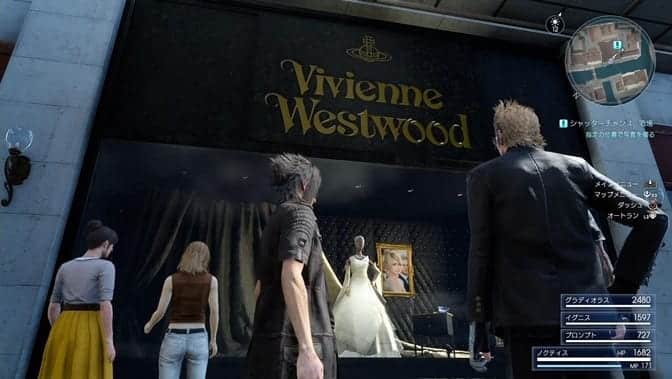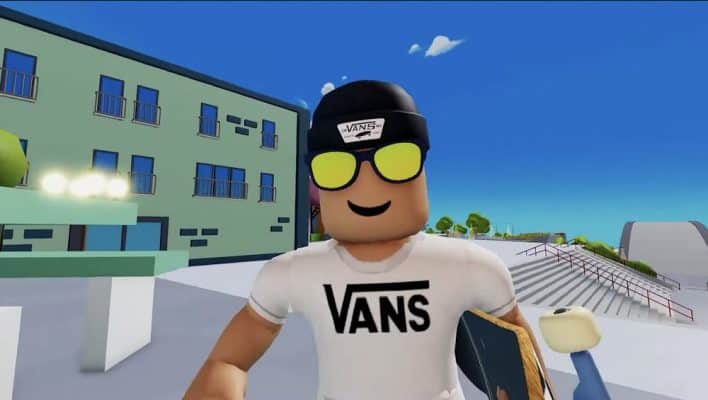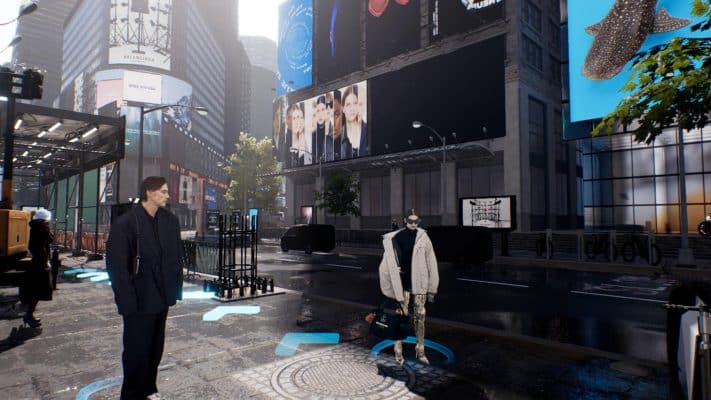How fashion and video games have influenced each other
In recent years, the video game industry has become a global colossus, surpassing both film and music in terms of turnover. This success was accentuated during the recent pandemic, when gaming became more than just a pastime: it was a virtual place to meet, share experiences and feel part of a community. Not surprisingly, the average age of gamers has risen to 35, with an increasingly diverse audience that includes a growing percentage of women. In this changing landscape, gaming is no longer just the realm of ‘nerds’, but a dynamic and receptive environment ready to welcome new influences. Among these, fashion has found fertile ground for expression and experimentation. Thus, two apparently distant worlds, one based on aesthetics and exclusivity, the other on technology and interactivity, have begun to dialogue and merge. We are talking about Fashion Gaming, where iconic video game characters wear clothes designed by Valentino or Gucci, and where luxury brands create digital collections for virtual environments. But this story is not a one-way street: video games, in turn, have profoundly influenced the world of fashion, inspiring collections, aesthetics and even new ways of interacting with the public. The connection between fashion and video games is not just a phenomenon of costume, but a fusion of languages that reflects the evolution of our hyper-connected societies.
How video games have attracted fashion
If we look at the phenomenon, investigating the fuse that blew everything up, we find as an emblematic example Travis Scott’s virtual concert on Fortnite, which attracted almost 28 million users in an event that combined music, entertainment and fashion. Since then, the gaming world has become a fertile ground for increasingly creative collaborations. Several brands have approached the Battle Royal brand, giving players the industry’s own garments to wear on their avatars. But it’s not just about dressing avatars. The avatar itself has become a new form of personal expression. It is not just a faithful representation of ourselves, but our ideal alter ego, a way to express our desired style and experiment with identities we might not dare to wear in real life. Virtual clothing and accessories allow luxury to be experienced in an accessible way, turning the ‘virtual self’ into a style statement. Collaborations between fashion and gaming have also reached the metaverse, where virtual shops of brands such as Dolce & Gabbana, Bulgari and Balenciaga offer unique experiences, breaking down barriers to access luxury. Thanks to augmented reality and hybrid technologies, consumers can try on garments, explore collections and purchase luxury goods with unprecedented ease. These partnerships are not just marketing campaigns: they are a new form of storytelling. Fashion, through video games, becomes part of a playful narrative that strengthens the connection with consumers, turning products into experiences and broadening the horizon of fashion marketing. Now, to fully understand the concept, let us take some striking examples, starting with how Fashion has influenced the world of Gaming:

Final Fantasy
The Final Fantasy saga is not only a milestone in the history of video games, but also a platform that has managed to link the worlds of gaming and fashion. With its mix of epic storytelling and charismatic characters, the Japanese franchise has attracted iconic designers and brands, creating collaborations that have left their mark. One of the most memorable collaborations is with Vivienne Westwood, the legendary British designer who brought her unique style to the fantasy world. In Final Fantasy XV, Westwood created a sumptuous wedding dress for Lunafreya Nox Fleuret, the game’s co-star princess. The gown, complete with a richly embroidered veil, perfectly reflects the elegant and mystical spirit of the saga, but with a touch of glamour that only Westwood could devise. Thus it is that the former punk queen has transformed herself into a fantasy designer, bringing a touch of haute couture to Square Enix’s digital realm. The case of Lightning, the heroine of Final Fantasy XIII, who instead became a model for Louis Vuitton, is different. The French fashion house’s advertising campaign, signed by creative director Nicolas Ghesquière, marked a historic moment: for the first time, a video game avatar was chosen as the face of a haute couture collection.
Animal crossing
Animal Crossing: New Horizons was released by Nintendo on 20 March 2020, at the height of the global lockdown, offering an escape from a reality that seemed catastrophic and unexpected. On a desert island populated by anthropomorphic animals, players could build houses, garden, furnish interiors, and provide for themselves. Among the most popular activities for players was customising their avatar with all kinds of clothes, purchased in the Able Sisters virtual shop. This function took on an almost therapeutic role during the long months of lockdown, so much so that the New York Times wrote on 6 May 2020: ‘Step aside Armani, Dior, Versace. Fashion in times of lockdown is an Able Sisters business’. Precisely because the physical boutiques were closed, players started to recreate digital versions of designer clothes in the game that, in reality, they could not buy. The impact was such that platforms such as Vestiaire Collective, specialising in second-hand clothes, made it possible to buy real clothes corresponding to those recreated in the game, showing how the boundary between the virtual and real worlds was becoming increasingly blurred. One of the most emblematic moments of this virtual revolution was the collaboration with Valentino. The Italian brand recreated twenty looks from the Spring-Summer 2020 and Pre-Fall 20/21 collections, available directly in the game.

Vans/Roblox
In September 2021, the famous trainer brand Vans entered the metaverse with Vans World, an interactive experience on the Roblox gaming platform. For the first time, the Californian brand did not limit itself to releasing video game-inspired collections, but created a true digital universe dedicated to its streetwear style and skate culture. Inside Vans World, players can explore environments that recreate real skateparks, perform skateboard tricks and customise their look with Vans outfits and shoes. A virtual shop allows players to purchase skateboarding components, from boards to wheels, as well as clothing. Before Vans World, the brand had already collaborated with the gaming industry through physical collections, such as the Nintendo Authentic, limited edition shoes decorated with the most iconic Nintendo characters in 8-bit graphics. With Vans World, however, the brand enters directly into the gaming experience, creating a bridge between the real and digital worlds, where the boundaries between fashion, gaming and lifestyle are becoming increasingly blurred.
Let’s turn the other way now, and understand the other half of this phenomenon, with striking examples of how Gaming has influenced the world of fashion:
Fortnite
Fortnite is much more than a video game. It is a cultural phenomenon that, over the years, has attracted millions of players, exclusive events and collaborations with the biggest names in entertainment and fashion. The Epic Games title continues to boast between 3 and 4 million connected users every hour. Numbers that are tempting for any brand, especially those looking to establish themselves in the Metaverse and digital fashion. Nike, Balenciaga, Moncler, Sundek and Ralph Lauren are just some of the brands that have decided to collaborate with Fortnite to dress players’ avatars with exclusive collections. Star Wars, Marvel, DC, Dune and even KAWS art have found their way onto the gaming isle, demonstrating how the title has become a sort of showcase for the future of digital entertainment. The reason is simple: Fortnite allows companies to expand their community, uniting gaming audiences with those of fashion, music or film. Although the title is no longer the mainstream phenomenon it was a few years ago, it remains a must for anyone wanting to explore the relationship between fashion and the virtual world. If the future is digital, Fortnite is still the obligatory step to get there.

Gucci/The Sims
A perfect example of this synergy is the collaboration between Gucci and The Sims in October 2020. The Florentine fashion house chose the famous life-simulator to debut its Off the Grid sustainable collection, giving users digital replicas of the line’s garments and accessories. The Sims 4 was the perfect stage to showcase its sustainable vision to an audience of millions of players. In fact, the House announced a collaboration presenting the work of two content creators from The Sims community, the first digital replica of a sustainable fashion line: Gucci Off The Grid. The designer known by the nickname Grimcookies, already a famous custom content creator on the platform, has reproduced some items from the Gucci Off The Grid collection, making them available to players through a mod of the game. The hats and shoes can be worn by The Sims characters, while backpacks and other accessories can be used as decorations in players’ homes. Grimcookies has also digitised the Gucci Off The Grid campaign, with testimonials such as Jane Fonda. In real life, the Gucci Off The Grid collection is made from reclaimed, recycled, organic and sustainably sourced materials; in the game, when gamers use Gucci Off The Grid accessories, entering a room the mood of The Sims characters improves.
Kenzo/Sonic
Kenzo, the brand founded by Japanese designer Kenzō Takada, experimented with a completely new approach to online shopping in October 2018. The experiment was called the Kenzo Shopping League and was much more than just e commerce: it was an actual video game competition, in which users could only attempt to buy the new Sonic trainers (a limited edition product) by playing – and winning. The game was only available for a certain period of time and participants had to overcome arcade-style challenges to get the chance to buy the product. The stock up for grabs was ultra-limited, only 100 pairs of trainers, and purchase was not guaranteed even to those who participated. Although Kenzo Shopping League was tied to only one product, the initiative was a great success, especially within the WeChat Games platform, which is very popular in China. Kenzo Shopping League proved that it is no longer enough to sell a product: you have to turn the purchase into a unique and engaging experience. And the world of video games is the perfect ground for this retail revolution.

Balenciaga/Afterworld
In December 2020, Balenciaga challenged the conventions of traditional fashion shows with the launch of Afterworld: The Age Of Tomorrow, a video game set in 2030. Created by creative director Demna Gvasalia, known for his innovative visions, the game was a response to the pandemic and the restrictions imposed, offering a new way to present the Fall 2021 collection. In Afterworld, players explore a dark, futuristic metropolis, dressing their avatars in Balenciaga signature total looks. The game is not just a virtual showcase, but an immersive experience that allows players to interact with the audience in a unique way, creating a connection between fashion and entertainment that goes beyond simply walking down the catwalk. The 50 men’s and women’s looks in the game combine disparate influences, from romantic florals to 17th century armour-style boots to futuristic NASA-inspired uniforms. Gvasalia described this collection as an ‘imaginary wardrobe of 2030’, a fusion of eras and styles reflecting the anxieties and aspirations of an uncertain future. The evolution of fashion through gaming suggests that virtual fashion shows and digital worlds could become the norm, offering personalised and immersive experiences that overcome physical limitations and break down barriers between fashion, technology and pop culture.
Edited by Antonio Di Pierro

